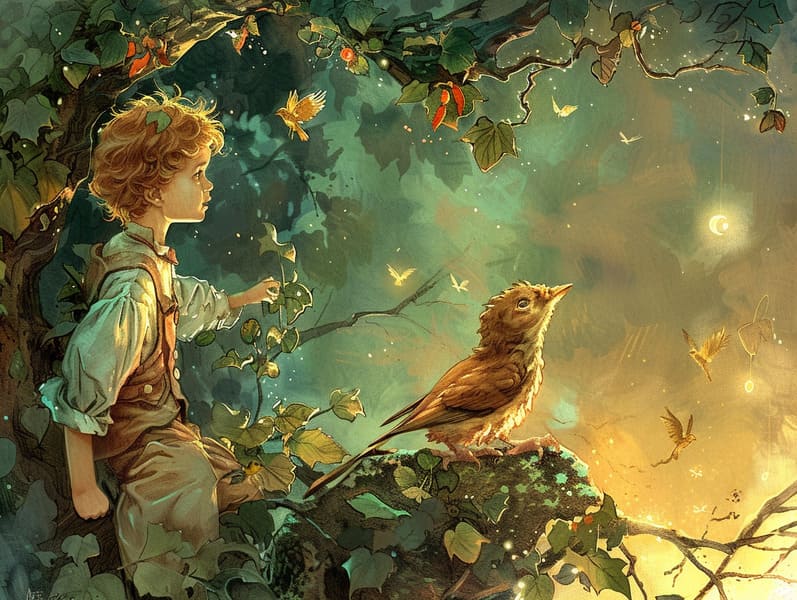The Rise of Fairy Tales for Kids and Their Perpetual Appeal.

Legendary fairy tales have ancient roots. These narratives have been conveyed from one generation to the next far before they were ever published. They developed from a variety of traditions, including Asian traditions. They were initially conveyed among adults, often carrying themes and messages reflective of the societal norms and beliefs of the time.
Jacob and Wilhelm Grimm, Jacob and Wilhelm Grimm, were among the first to assemble many of these beloved stories. Their published works, "Grimm's Story Collection," included narratives like "Cinderella," "The Story of Hansel and Gretel," and "The True Story of Snow White," which have since become staples in the world of iconic fairy tales. Similarly, Hans Christian Andersen's fantastical fairy tales, such as "The Story of the Little Mermaid," and "The Duckling that Could," have won hearts worldwide, cementing their place in the pantheon of treasured fairy tales.
Despite their historical roots, classic fairy tales remain as significant as ever, especially as children's bedtime stories. These charming stories are now available in various formats, including artistically illustrated books, enchanting animations, and free fairy tales online.
Their ongoing significance can be attributed to several delightful features:
Ethical Lessons: Old fairy tales often convey important moral lessons. Stories like "The Boy Who Cried Wolf" teach the value of truthfulness, while "The Race of the Tortoise and the Hare" demonstrate the merits of tenacity and unpretentiousness. These stories offer young ones clear distinctions between ethical and unethical, guiding their moral compass in a soft yet important way.
Empathy and Awareness: Classic fairy tales frequently portray personalities facing trials and tribulations, fostering young readers to feel with their struggles and celebrate their triumphs. For instance, "The Story of Beauty and the Beast" reveals the significance of looking beyond appearances to perceive the inner being of a character, advancing insight and insight.
Cultural Appreciation: Many old fairy tales are deeply embedded in the cultural contexts from which they developed. Engaging with these stories can provide intriguing perspectives into different backgrounds, fostering a sense of global understanding and knowledge.
Imagination and Innovation: The extraordinary elements in fairy tales—talking beasts—ignite children’s fantastical thinking. These narratives move readers to otherworldly realms, generating inventive thinking and a sense of delight that endures a lifetime.
Timeless fairy tales are not only entrancing but also pedagogical. They act as mesmerizing tools in strengthening various cognitive and affective skills in kids. When old fairy tales are read aloud, they cultivate language skills by presenting new vocabulary and complicated sentence structures. This practice also develops auditory skills and attention span, as the young track the narrative, looking forward to see what happens next.
Furthermore, reflecting on the themes and characters of classic fairy tales can advance evaluative skills and analytical skills. The young learn to notice patterns, guess what will happen, and comprehend cause and effect. These explorations also contribute to children voice their thoughts and feelings, fostering their emotional intelligence.
In today’s digital age, the proliferation of online storybooks has made these narratives more accessible than ever. Web-based platforms and mobile apps supply comprehensive collections of classic fairy tales that can be browsed or listened through anytime, anywhere. Fairy tales narrated are particularly favored, supplying an delightful method for the young to savor these entrancing tales. Voice books and read-out-loud videos carry characters and settings to life, often accompanied by bewitching background sounds and soundtracks that this site enhance the story journey.
The lasting appeal of ancient fairy tales lies in their ability to shift to present eras while sustaining their main lessons. Contemporary modernizations of these fairy tales often incorporate more diverse figures and modern settings, making them understandable to today’s audience. However, the fundamental themes of gallantry, humanity, and even-handedness remain unchanged, continuing to affect children of all ages.
Classic fairy tales also offer a sense of solace and homeliness. They showcase a structured narrative with a plain beginning, middle, and end, often concluding with the conclusion of conflicts and the triumph of morality over wickedness. This steadiness can be consoling for the young, allowing a sense of assuredness in an variable world.
Ancient fairy tales continue to enthrall and guide new generations, maintaining their elegance and importance in modern society. As children's bedtime stories, they allow a perfect blend of magic and knowledge, supporting moral values, empathy, and creativity. The prevalence of online storybooks and the likability of fairy tales recited confirm that these timeless tales remain reachable to new generations.
By guarding and distributing these stories, we continue to treasure the rich tapestry of cultural heritage and cultural heritage. Whether you are viewing a beautifully illustrated book, accessing a web collection, or listening through an read-aloud story, the majesty of timeless fairy tales is always within reach. These narratives emphasize of the undying presence of fairy tales and its ability to draw us together across centuries and lands.
Whether you are reading a gorgeously illustrated book, browsing a internet collection, or listening through an read-aloud story, the grace of popular fairy tales is always within reach.
These stories remind us of the unwavering presence of fairy tales and its ability to connect us across eras and regions, weaving a spell that charms and informs alike.